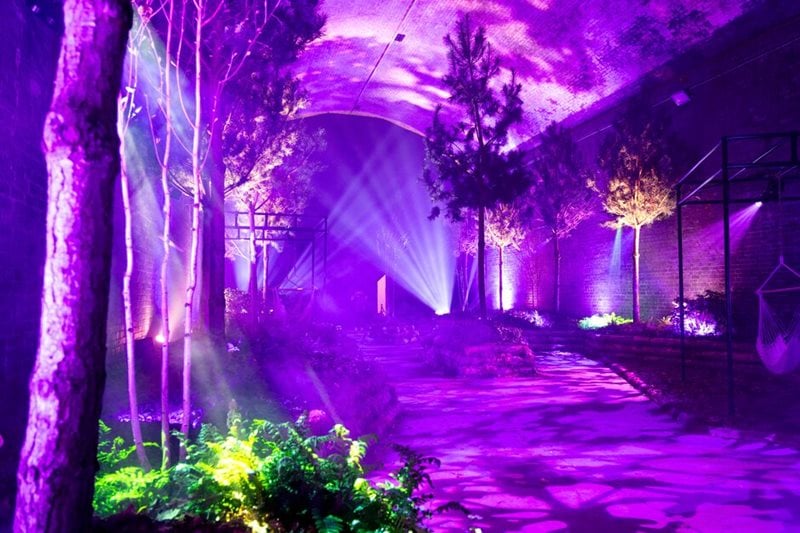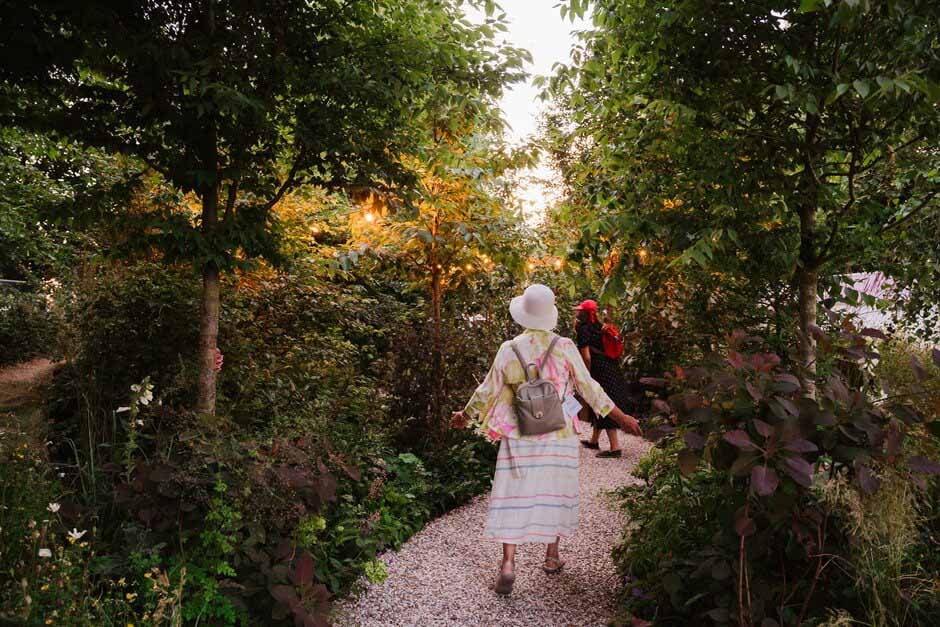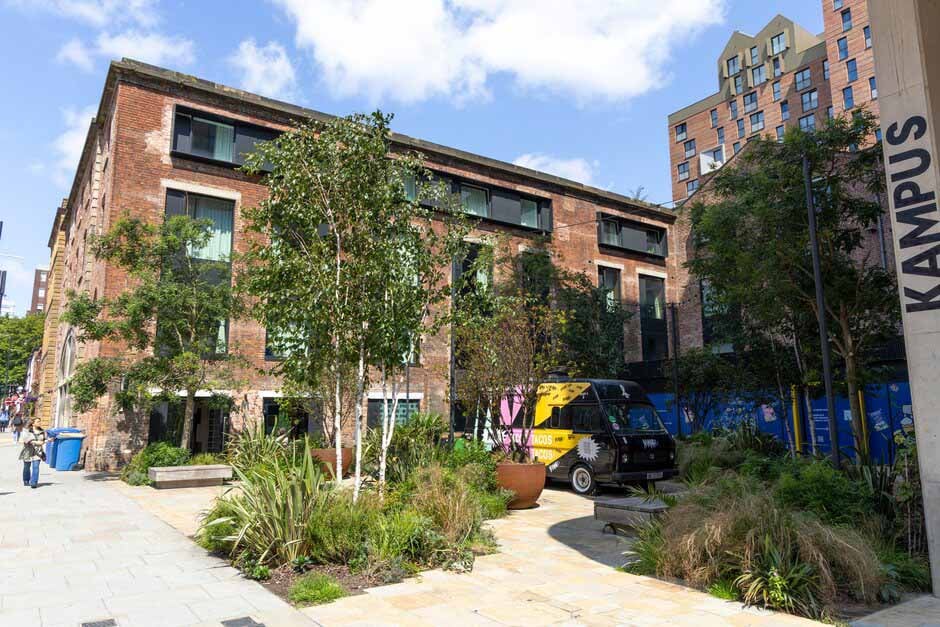The atmosphere and theatre of natural woodland brought to the heart of the city by award-winning designer Nathan Webster

Nathan Webster strongly believes in the importance of urban foresting and the retention of the existing forests and their futures. Off the Grid, his RHS Gold and Best in Show Garden at RHS Flower Show Tatton Park recreated an ancient woodland. That garden has now provided the basis for his latest project – a forest in the heart of the city. At the RHS Urban Show in Manchester visitors can stroll through the incredible immersive experience created by the Young Designer of the Year 2023.
Our garden embodies the Reduce, Reuse, Recycle ethos, emphasising the importance of managing and utilising natural materials responsibly.
-Nathan Webster
Forest planting

Reflecting the woodland ecosystem, key features in the RHS Urban Forest are the natural lighting as it filters through the canopy and the reuse of natural materials native to the environment. Trees of varying stages, underplanted with ferns show the lifecycle of a forest, complete with pops of purple peeping through from Digitalis purpurea.
Urban Forest plant list
- Dryopteris filix mas
- Asplenium scolopendrium
- Polystichum polyblepharum
- Blechnum spicant
- Liriope ‘Big Blue’
- Gallium odoratum
- Matteuccia struthiopteris
- Dryopteris ‘Crispa Whiteside’
- Dryopteris erythrosora
- Pulmonaria ‘Blue Ensign’
- Rhododendron ‘Catawbiense Boursault’
- Symphytum grandiflorum
- Symphytum ‘Wisley Blue’
- Allium ursinum (wild garlic)
- Polypodium vulgare
- Brunnera macrophylla
More from the RHS
The benefits of urban trees

1. Boosting biodiversity
Trees provide shade and habitats for a variety of species. According to the Woodland Trust, oak trees support 2,300 species – 326 of which are entirely dependent on oak.
2. Reducing flooding
The Forestry Commission reports that leaves and stems can reduce the amount of rain reaching the ground by as much as 45%. This effect slows rainfall, allowing more water to be evaporated back into the atmosphere.
Tree roots penetrate the earth which makes it easier for water to soak away and plants also take up water through their roots.
3. Cooling cities
Trees reduce temperatures in urban areas in two ways – by providing shade to buildings and people, and by transpiration (releasing water vapour through leaves, cooling the air).
4. Growing the economy
UK100 found that increasing woodlands in the Greater Manchester area could provide 2,300 additional jobs in the city. A 2013 study by Natural Economy Northwest Investment Forum showed landscaping improvements in the northwest yielded up to 16% of net growth in employment.
5. Reduce pollution
Leaves intercept particle pollutants and absorb harmful gases. In 2020, the air pollution removal by nature was estimated to have avoided 2,001 deaths, and saved 49,126 years of life being lost (Office of National Statistics).
Trees in Manchester

A 2024 survey sponsored by the RHS looked at the trees in Manchester’s public parks. It discovered several extrememly rare species including Variegated American Green Ash and Railway Popular in Alexandra Park and Adam’s laburnum and Amur cork tree in Fletcher Moss Botanical Garden.

RHS Urban Show Manager Lex Falleyn says, “Forests are not only crucial to biodiversity and the health of our environment, they can also add to personal wellbeing. Visitors to the show will be able to experience the calming biophillic affect of a stroll through the forest without leaving Depot Mayfield.”
You might also be interested in...

